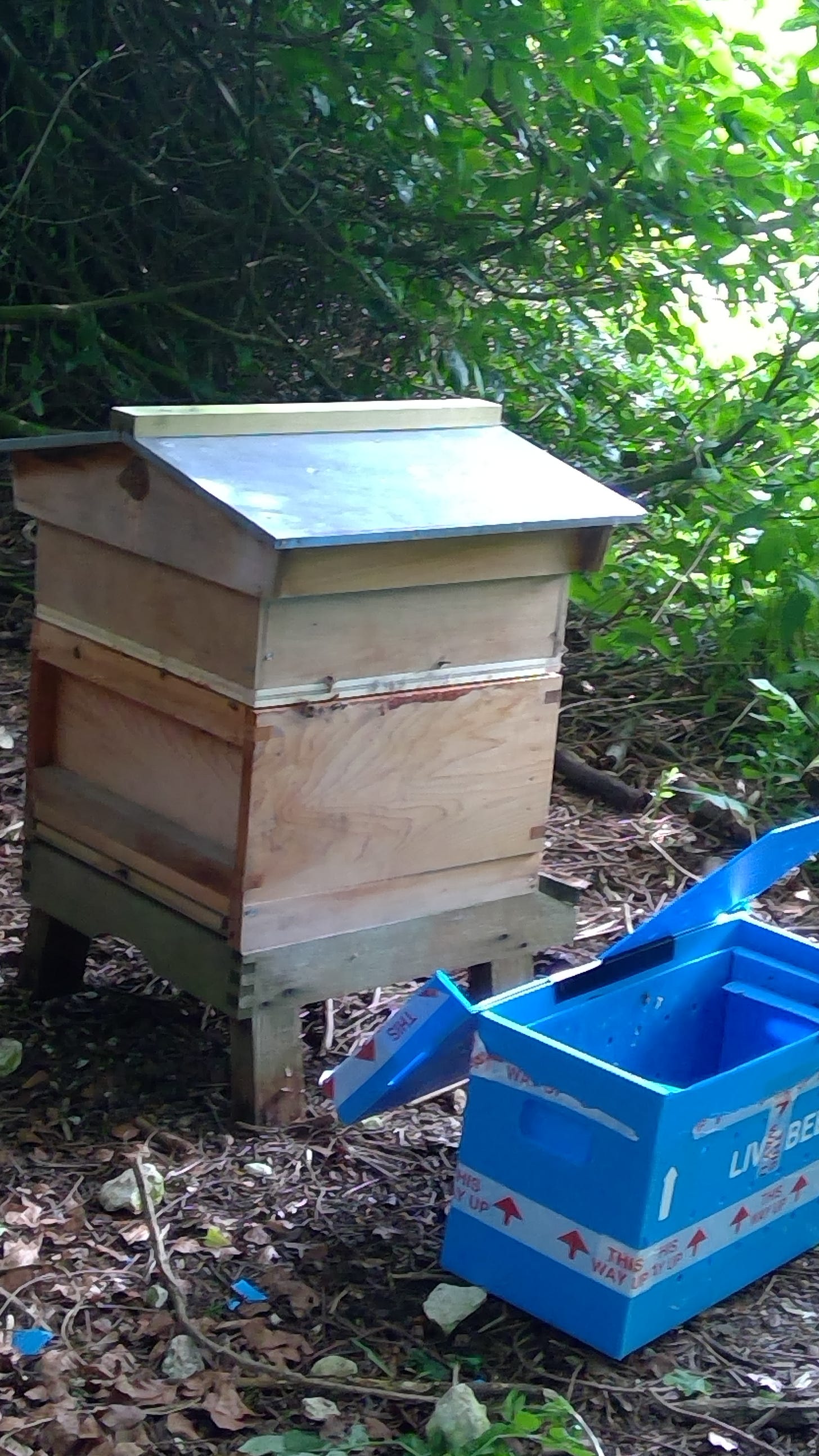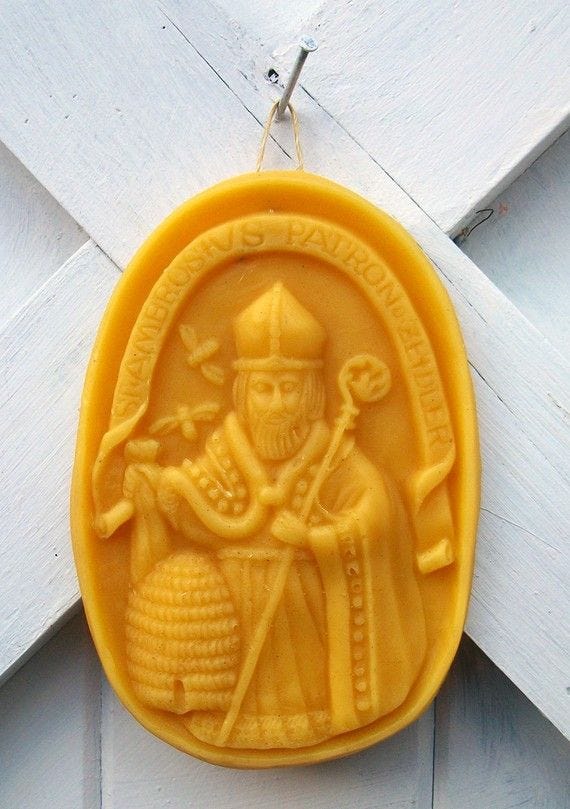To bee or not to bee?
I walked into the English office at school the other day to discover that we’d had a rather unusual delivery. I’m not sure if the postie is used to delivering this sort of parcel but there they were, a bevy of bees buzzing away quite vociferously (or should that be mellifluously?) as they waited for one of my colleagues to take them to their new home. And a lovely new home it is too.
When I wandered up to the hive between lessons, the bees all seemed very happy with their new abode. Members of our beekeeping club were also delighted with the arrival of their Buckfast bees, a particularly fine breed of bee, it turns out. According to Lottie Möller in Bees and their Keepers, the Buckfast bee “is said to bring together all the good qualities a bee can possess. It is more resistant to parasites and diseases than other bees. It is enormously productive but not particularly given to swarming - disinclined to swarm as beekeepers say - and remarkably docile.” I like the sound of docile.
Buckfast Bees are now prized all round the world, but they were bred originally at Buckfast Abbey by the remarkable Brother Adam, about whom it was said (in The Economist no less) that he “was unsurpassed as a breeder of bees. He talked to them, he stroked them. He brought to the hives a calmness that, according to those who saw him at work, the sensitive bees responded to.”
Bees and monks go back a long way. Bees and the faith go back even longer. The Israelites were promised a “land flowing with milk and honey,” Deborah means “bee,” John the Baptist’s food was locusts and wild honey. And then there was St Ambrose, patron saint of beekeepers. It is said that when he was a child, a bee landed on his tongue and left some honey there, thereby prophesying that the saint would be “honey-tongued.” Here’s an image of St Ambrose, made appropriately out of wax.
Importantly, bees also made their way into the liturgy (see also here), specifically into the Exsultet or Easter Proclamation where we hear the following words:
In hujus ígitur noctis grátia, súscipe, sancte Pater, laudis hujus sacrifícium vespertínum, quod tibi in hac cérei oblatióne sollémni, per ministrórum manus de opéribus apum, sacrosáncta reddit Ecclésia.
On this, your night of grace, O holy Father, accept this candle, a solemn offering, the work of bees and of your servants’ hands, an evening sacrifice of praise, this gift from your most holy Church.
and
Sed iam colúmnæ hujus præcónia nóvimus, quam in honórem Dei rútilans ignis accéndit. Qui, licet sit divísus in partes, mutuáti tamen lúminis detriménta non novit. Alitur enim liquántibus ceris, quas in substántiam pretiósæ hujus lámpadis apis mater edúxit.
But now we know the praises of this pillar, which glowing fire ignites for God’s honour, a fire into many flames divided, yet never dimmed by sharing of its light, for it is fed by melting wax, drawn out by mother bees to build a torch so precious.
Does any of this matter? Yes, it absolutely does, says Fabrice Hadjadj (who is the closest we have to a modern day G. K. Chesterton) in this wonderful talk (in French). The words and images of the parables and of the liturgy really matter, Hadjadj argues, because Christianity is a faith that is rooted in reality. It is a sacramental religion. We cannot simply replace references to the beeswax that goes into the making of the Paschal candle with technocratic equivalents. If most candles now are made from the byproducts of the petrochemical industry, that doesn’t mean we should rewrite the Exsultet.
Why not? Because “La foi chrétienne nous apprend que la vie ordinaire d’un charpentier juif du 1er siècle reste indépassable, et que tous nos surhommes, cyborgs, immortels du futur ne sont que les effets d’une impuissance à reconnaître ce que la vie ordinaire recèle d’inépuisable poésie.”
(If you want to read the rest of Hadjadj’s talk - or indeed any of the other talks from the same wonderful series - you can find it here.)
In other words, the Incarnation really matters. And because the Incarnation matters, bees matter too. To bee or not to bee: that is the question. But the answer’s obvious. Of course, we should.






